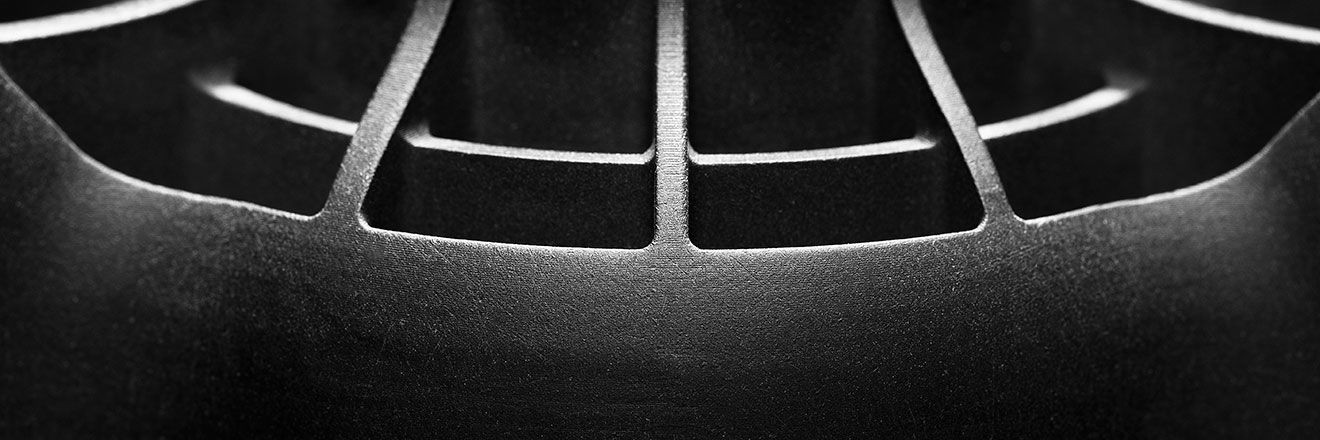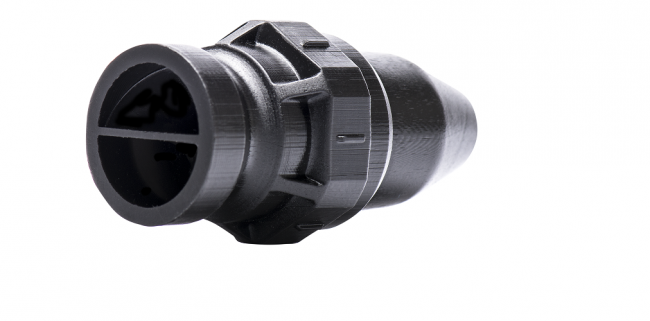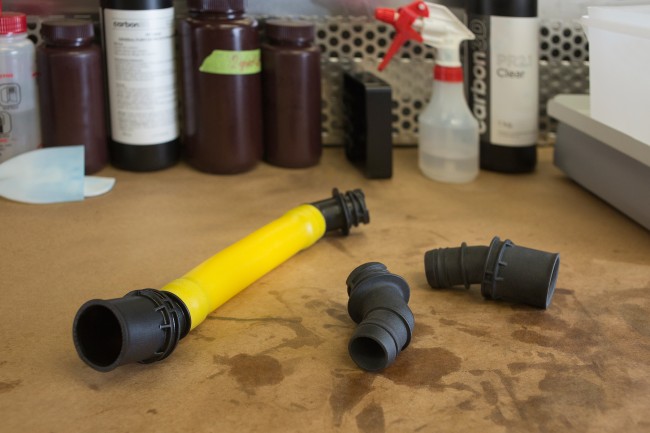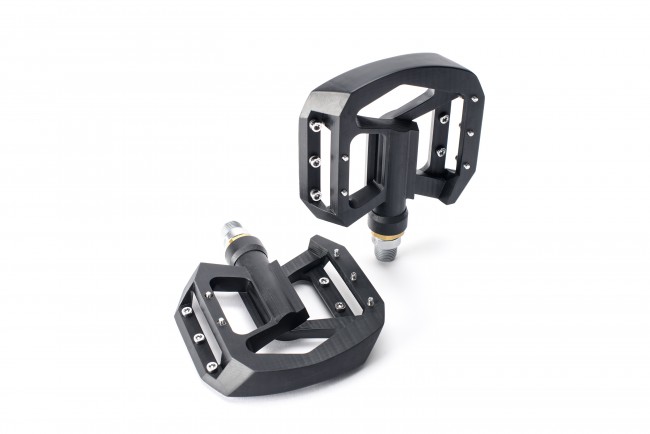3D Printing with Carbon Rigid Polyurethane resin : the complete Q&A
Posted By Sculpteo on May 18, 2016 | 0 comments
Over the past 10 weeks, we’ve had the opportunity to use the new Carbon3D M1 digital light projector (DLP) resin-based 3D printer. Not only is the M1 printer the fastest in its category (stereolithography (SLA) printers), it also is compatible with a wide range of materials. In this blog series, 3D printing engineer Chris Lau, our M1 specialist, will share his expertise on the Carbon 3D M1 resins. This first article will focus on our top pick: Rigid Polyurethane (RPU).
Our last meetup in Paris was dedicated to the Carbon 3D M1 printer and CLIP its resins. During a live stream from our Californian factory, Chris shared his knowledge and advice about 3D printing with Rigid Polyurethane.
What does the Rigid Polyurethane Resin look like?
Rigid Polyurethane is a black opaque resin. When cured it has a relatively smooth surface that looks slightly shiny like an injection molded part. The surface becomes matte when you polish it. The surface is less smooth than a Polyjet resin for instance. Depending on the orientation of the model when you are 3D printing, you can see sometimes very thin layers that are not strictly speaking machine layers. These are instead more artifacts coming from the process and don’t mean a fragility on the part.
For what kind of pieces is the Rigid Polyurethane Resin really good for?
Rigid Polyurethane is very stiff and strong with material properties that outperform ABS plastic and rivals Nylon. This material is perfect for mechanical parts effort that needs to be tough, heat-resistant, and abrasion-resistant. It is highly recommended to use Rigid Polyurethane for 3D printing functional and end-use parts where laser sintered Nylon (polyamide) is not strong enough. This material is already used for production by some of our pilot customers for its excellent strength and ductility. Carbon also released a customer story with Ford where they showcase the use of RPU for creating an oil filler cap for a V8 engine. That’s a perfect application for Rigid Polyurethane.
Another good example is these functional pedals:
How precise is the Rigid Polyurethane Resin 3D print?
The M1 3D Printer can print at very high resolution. Features as thin as 0.25 mm can be 3D printed, but the recommended thickness for certain structural features will vary based on their specific nature. For example, a vertical wall 5 cm in height will be somewhat flexible if it is printed at a thickness of 0.25 mm, but rigid if it is printed at a thickness of 0.4 mm.
Can I print moving parts with the Rigid Polyurethane Resin?
In theory, you could, but it really depends on your 3D model. Rigid Polyurethane as any CLIP resin needs to be supported during the prints. That means that we need to support any moving parts and depending on the geometry it can be very difficult to remove the support. We have printed the Sculpteo logo for instance without any problem, but the clearance is tremendous. It’s too early for us to know what is the perfect minimum clearance requested that’s why we don’t offer interlocking parts option on any CLIP resin so far.
How does the 3D printer work?
When you upload your 3D file on Sculpteo.com, we take care of your file by repairing it if needed and preparing it for the 3D printer. The M1 3D Printing is using CLIP technology. CLIP, which stands for Continuous Liquid Interface Production, eliminates shortcomings of other 3D printing technology by emphasizing a tunable photochemical process over a traditional mechanical approach.
CLIP works by projecting a continuous sequence of UV images, generated by a digital light projector, through an oxygen-permeable, UV-transparent window below a liquid resin bath. The dead zone created above the window maintains a liquid interface below the part. Above the dead zone, the curing part is drawn out of the resin bath.
How much does it cost to 3D print with the M1 3D printer?
Prices vary depending on the size of your object and the amount of material needed to print it (density of your object). When you upload your file on Sculpteo.com, you get a confidential real-time price quote. You can then adjust your file to change the price.
How should I prepare my file for a 3D print in Rigid Polyurethane resin?
3D models can be prepared similarly as for SLS printers, with one exception. If a design has an enclosed hollow region, the liquid resin will be permanently trapped within the cavity. To avoid this, designs for the M1 3D printer should include an opening to allow drainage of the excess uncured resin from hollow regions. As with other DLP 3D printers, the M1 printer will create supports for overhang regions that will be removed later. For efficient support removal during part cleanup, try to design your part such that areas that need support are accessible!
What kind of finishing can I get?
We offer 2 types of finishing for Rigid Polyurethane on the website
- Raw : we cut the supports
- Hand polished: we manually sand and polish the part in order to remove any support scar.
The CLIP resins are still in a testing phase, but we will release them really soon. If you would like to 3D print in Rigid Polyurethane you need to register to the CLIP Pilot Program. We explain you everything here. If you have any other question regarding Rigid Polyurethane resin and CLIP technology, don’t hesitate to contact us.


 Connect with Google
Connect with Google Connect with Facebook
Connect with Facebook


